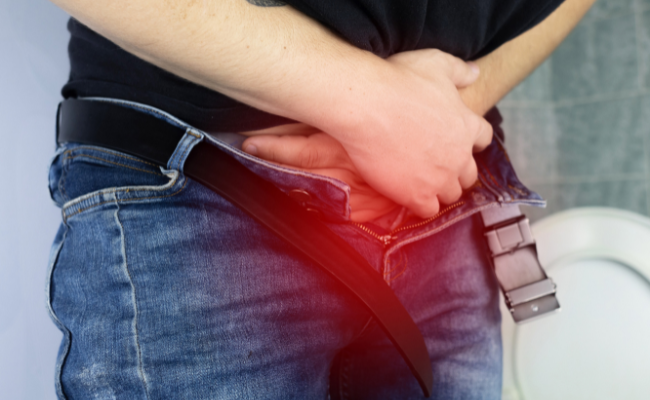How to Treat Prostatitis?
- November 08, 2023
- No Comments

What is Prostatitis?
Prostatitis, a comprehensive term denoting inflammation of the prostate gland, a vital organ in the male reproductive system responsible for seminal fluid production, encompasses various symptoms—from pelvic pain and urination difficulties to sexual dysfunction. This urological concern significantly impacts affected individuals' quality of life. Prostatitis manifests in four distinct conditions affecting the prostate gland, with two types linked to urinary tract infections (UTIs) and others unrelated. Despite potential onset in men of any age, misdiagnosis is prevalent, leading individuals to be inaccurately labeled with prostatitis when another condition may be at play.
Why Does Prostatitis Occur?
The causes of prostatitis are diverse, leading to the categorization of this condition into four main types:
- Acute Bacterial Prostatitis: This type is caused by a bacterial infection, often originating from a urinary tract infection that extends to the prostate. It is characterized by sudden and severe symptoms.
- Chronic Bacterial Prostatitis: In this form, recurrent urinary tract infections persist due to bacteria residing in the prostate, making complete elimination challenging. It is a long-term condition marked by intermittent symptoms.
- Chronic Prostatitis/Chronic Pelvic Pain Syndrome (CP/CPPS): Representing the most prevalent form, the cause of CP/CPPS is not precisely understood. It may be linked to inflammation, muscle tension, or nerve-related issues in the pelvic region.
- Asymptomatic Inflammatory Prostatitis: This type involves the presence of inflammation without noticeable symptoms. It is often discovered incidentally during medical examinations for other conditions.
How to Identify Prostatitis Symptoms?
Recognizing the symptoms of prostatitis is crucial for timely intervention and effective management. Symptoms can vary based on the type of prostatitis but may include:
- Pelvic Pain: Discomfort or pain in the pelvic area, genitals, lower back, or rectum is a common symptom. The intensity may vary from mild to severe.
- Urinary Symptoms: Individuals may experience difficulty urinating, frequent urination, urgency, a weak urine stream, or a sensation of incomplete emptying of the bladder.
- Sexual Dysfunction: Pain or discomfort during ejaculation, erectile dysfunction, or reduced interest in sexual activity can be indicative of prostatitis.
- Flu-Like Symptoms: Acute bacterial prostatitis may present with symptoms such as fever, chills, and body aches, resembling flu-like manifestations.
- Chronic Pelvic Pain: A persistent ache or discomfort in the pelvic region lasting for at least three months is a common symptom of chronic prostatitis.
How to Treat Prostatitis?
The treatment of prostatitis involves a comprehensive approach tailored to the specific type and symptoms. Common treatment strategies include:
- Antibiotics: In cases of bacterial prostatitis, antibiotics are prescribed to eradicate the infection. The choice of antibiotics depends on the type of bacteria causing the infection.
- Anti-Inflammatory Medications: Nonsteroidal anti-inflammatory drugs (NSAIDs) may be recommended to reduce inflammation and alleviate pain associated with prostatitis.
- Alpha-Blockers: Medications known as alpha-blockers may be prescribed to relax the muscles of the prostate and bladder neck, improving urine flow and reducing symptoms.
- Pain Medications: Chronic pelvic pain associated with prostatitis may be managed with pain medications to enhance comfort and overall well-being.
- Physical Therapy: Pelvic floor physical therapy is beneficial for some individuals, helping to relieve muscle tension and improve symptoms.
- Lifestyle Modifications: Adopting lifestyle changes, such as drinking plenty of fluids, avoiding caffeine and spicy foods, and practicing good hygiene, can contribute to symptom relief.
- Warm Baths: Soaking in warm baths may help relax pelvic muscles, providing relief from pain and discomfort.
- Biofeedback: Biofeedback techniques can assist individuals in gaining better control over pelvic muscles, reducing tension and improving symptoms.
Benefit Points of Treating Prostatitis:
- Symptom Relief: Successful treatment leads to relief from symptoms such as pelvic pain, urinary issues, and sexual dysfunction, contributing to an improved quality of life.
- Improved Quality of Life: Managing prostatitis enhances overall well-being, allowing individuals to engage in daily activities without the hindrance of persistent symptoms.
- Prevention of Complications: Timely intervention helps prevent the development of complications, such as recurrent infections or chronic pelvic pain, safeguarding long-term health.
- Enhanced Sexual Health: Treatment can positively impact sexual function, alleviating discomfort during sexual activity and fostering a healthier intimate life.
- Individualized Care: Tailored treatment plans consider the specific type of prostatitis and individual symptoms, ensuring personalized and effective care for each patient.
- Psychological Well-being: Alleviating the physical symptoms of prostatitis contributes to improved mental and emotional well-being, reducing stress and anxiety associated with the condition.
- Long-Term Management: Adopting lifestyle changes and ongoing management strategies can contribute to the long-term control of prostatitis symptoms, promoting sustained well-being.
Comments (0)